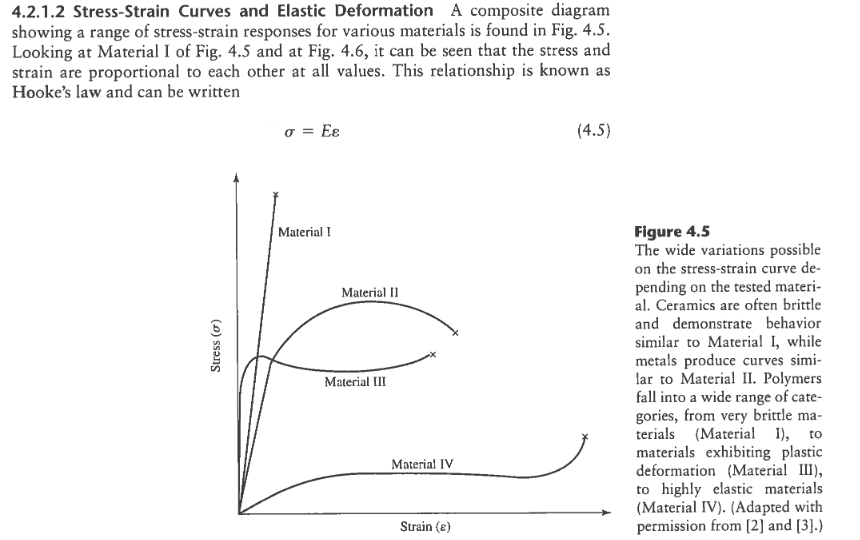The last two indicate ductility.
Ceramic vs metal stress strain curve.
1 metals al alloy stress strain curve.
The engineering stress strain curve does not give a true indication of the deformation characteristics of a metal because it is based entirely on the original dimensions of the specimen and these dimensions change continuously during the testing used to generate the data.
The general shape of the engineering stress strain curve fig.
1 requires further explanation.
Occurs when crack propagation starts polymers.
The zone where a material will return to its original shape for a given amount of stress toe region applies to a ligaments stress strain curve.
Stress vs strain curve.
2 stress strain curve for ceramics.
Elastomers are the ones that strains more w a lower stress.
Occurs when polymer backbones are aligned and about to break σ y engineering typical response of a metal ts stress engineering strain.
Occurs when noticeable necking starts ceramics.
With a very short elastic region but highly capable of supporting huge stresses.
The first two are strength parameters.
Represents straightening of the crimped ligament fibrils.
The stress at the maximum on the engineering stress strain curve metals.
Derived from axially loading an object and plotting the stress verses strain curve.

